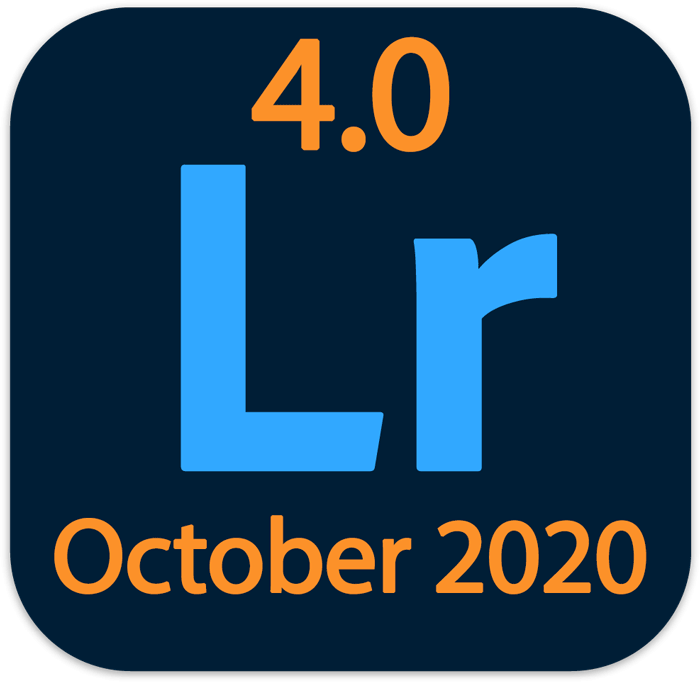 In conjunction with its annual MAX creativity conference (going on now virtually, free to attend!), Adobe last night released cloud-based Lightroom desktop app version 4.0 for Windows and Mac, and Lightroom Mobile 6.0 for iOS and Android. These updates contain new features, including color grading and graphic watermarks, support for new cameras, new lens profiles, and bug fixes.
In conjunction with its annual MAX creativity conference (going on now virtually, free to attend!), Adobe last night released cloud-based Lightroom desktop app version 4.0 for Windows and Mac, and Lightroom Mobile 6.0 for iOS and Android. These updates contain new features, including color grading and graphic watermarks, support for new cameras, new lens profiles, and bug fixes.
Lightroom Classic 10.0 was also released – read about it in my Lightroom Classic article.
In This Article:
Operating System Requirements
How and When to Update
New Cameras Now Supported
New Lens Profiles
Color Grading
Graphical Watermarks
Versions
Work Performed Indicators
Learn and Discover Enhancements
Lightroom Desktop: Zoom Enhancements
Lightroom Mobile: Best Photos
Related Content
(These links above to sections below may or may not work depending on what device and system you are using. If they don’t, then scroll down.)
Lightroom Desktop System Requirements
The cloud-based Lightroom desktop app version 4.0 drops support for MacOS High Sierra and Windows 10 versions before 1903.
Operating System Requirements
- Windows 10 versions 1903 and later
- MacOS Mojave, Catalina (and Big Sur when it comes out later this year).
If your operating system is not up-to-date enough, you will not see the option to update Lightroom in your Creative Cloud app.
How and When to Update
When to Update the Lightroom Desktop App (if Lightroom didn’t auto-update):
I don’t expect any issues with Lightroom 4.0 and updates of this app usually go smoothly, but as usual, if you’re not in a hurry to get the new features, it can’t hurt to wait a week or so to make sure that others aren’t experiencing serious bugs with it.
If I hear of serious issues with this release I will post them here in this section – please check here rather than emailing me.
Click here to check for bug reports and to report bugs or issues that you encounter. Also please leave a comment below to let us know of bugs you experience!
Problems:
- Custom crop appears not to work – when user hits Enter to complete, appears to revert to uncropped image (confirmed bug). This is just a “visual” issue – it doesn’t affected exported file. Workaround: in Preferences > Performance, enable GPU. Move to the next image and back again.
- Copy and Paste not working – Paste freezing (confirmed bug)
How to Update the Lightroom Desktop App
If you previously were prompted to agree to auto-update Lightroom and if you agreed, then when you open Lightroom for the first time after the update is available, go to Help>System Info to verify that you are now using version 4.0. Otherwise to update to 4.0, go to Help>Updates, and in the Creative Cloud app, on the Updates tab click on Update next to Lightroom (cloud-based photo service; not Lightroom Classic or Lightroom CC 2015.)
How to Update Lightroom Mobile
Find the Lightroom app in the Apple App Store or Google Play Store and tap on Update.
New Cameras Now Supported
The entire Lightroom ecosystem now support the following new camera:
- Panasonic LUMIX DC-S5
Click here for a list of all cameras supported by each version of Lightroom (and Camera Raw).
New Lens Profiles
These new lens profiles are available throughout the Lightroom ecosystem:
Color Grading
Now throughout the Lightroom ecosystem, as a replacement for the Split Toning panel, the Color Grading panel allows one to apply a color tint separately to highlights, shadows and midtones, controlling hue, saturation and luminance, and/or a tint globally using industry standard color controls.

Hue and saturation are controlled with color wheels (or sliders), and luminance is controlled with the slider below the color wheel.
Lightroom Mobile Access:

Replicating Split Toning
To replicate the old split toning capability, use the Shadows and Highlights tints, and set Blending to 100.
Presets
There are three new presets in the Creative section of the Presets panel that use color grading: Cool Matte, Cool Shadows and Warm Highlights, and Warm and Moody. Other presets that used to use split toning now use color grading (with Blending=100).
Graphical Watermarks
Now apply a JPEG or PNG graphical watermark to your exported images, and sync your graphic watermark to your other devices.
To access this feature in Lightroom desktop, after clicking on the Share icon in the top right, choose Export Custom Settings, check Include Watermark and click on the gear symbol to the right.
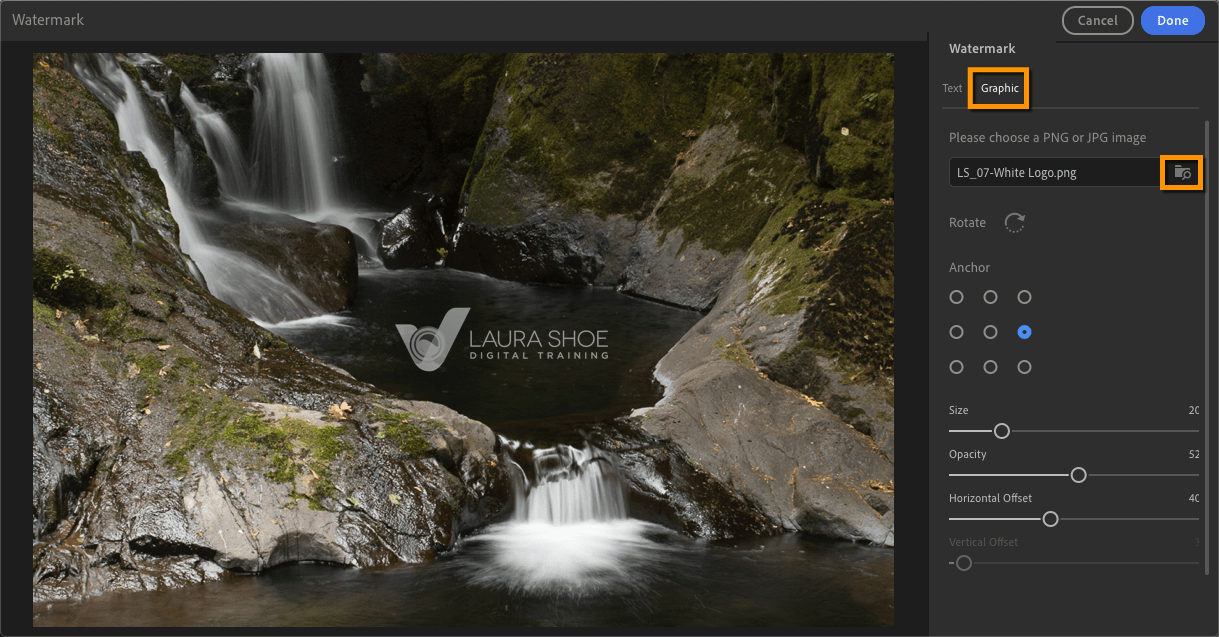
In Lightroom Mobile, tap on the Share icon, then Export as…, turn on Include Watermark, tap on Customize, and then on Graphic:
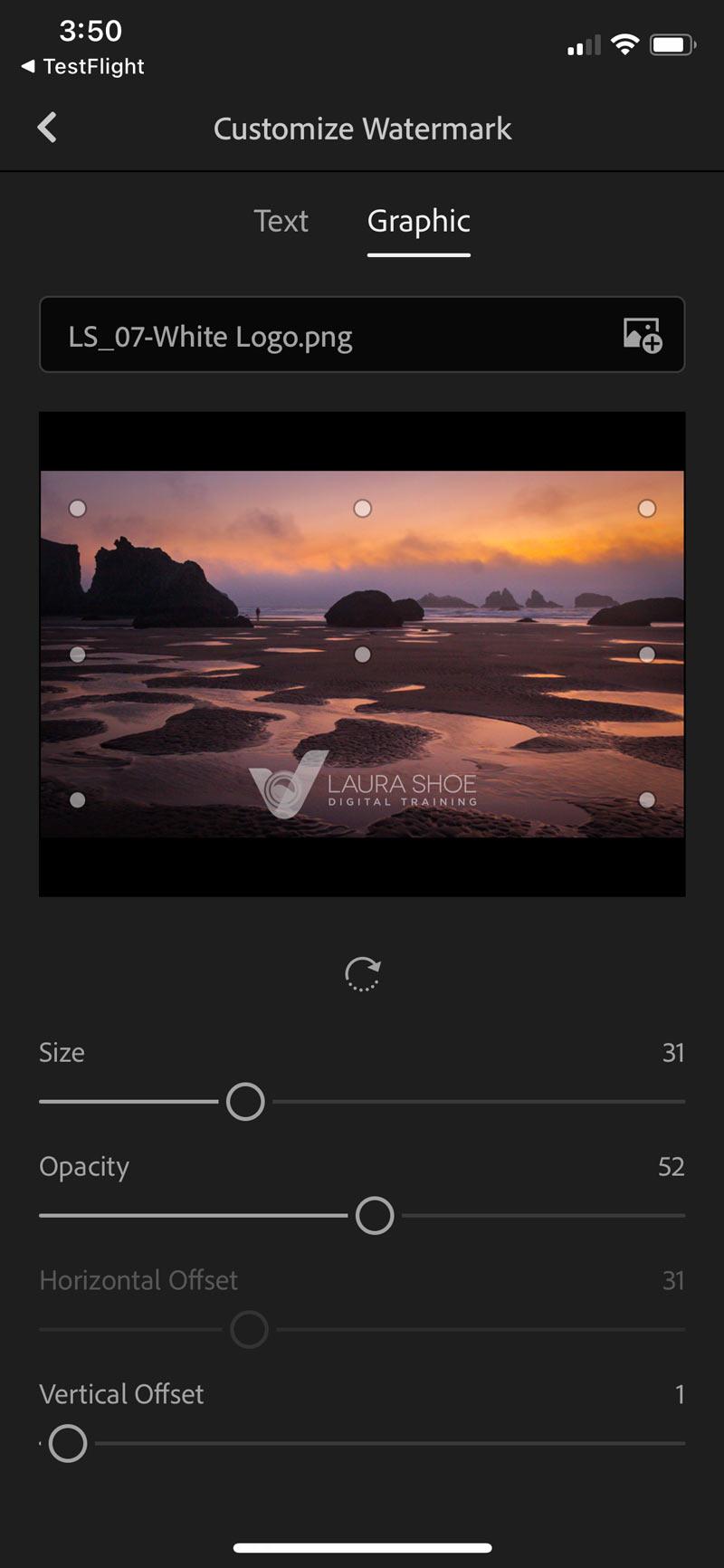
If you had loaded your graphic watermark in Lightroom Desktop, it will be available automatically in Lightroom Mobile.
Work Performed Indicators
If you have performed tone curve, color mixing, color grading and/or defringe work, you will see dots signaling this:
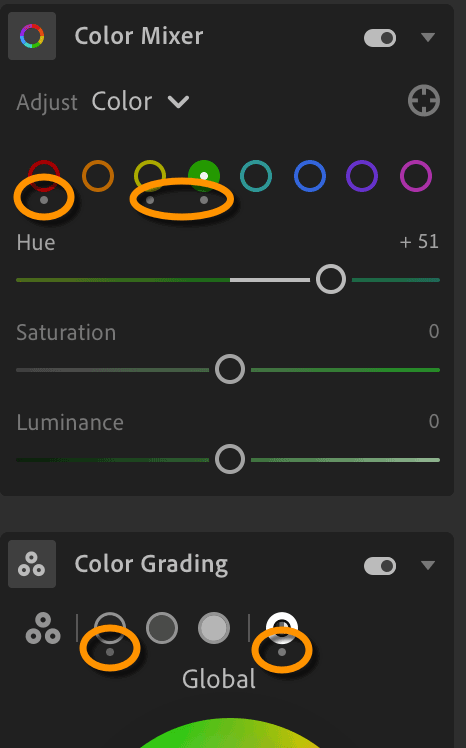
Versions
Versions are now organized into two tabs – “named” that you created, and “auto” that are automatically created by Lightroom:

Versions are automatically created using the same triggers used to save edits for an image, such as moving to next image while editing, going back to grid from loupe, force sync, etc.. This allows one to step back in time on editing of an image. All versions sync across the Lightroom ecosystem.
Learn and Discover Enhancements
Learn and Discover feeds are now personalized for you, and the user profile has been enhanced to show who you’re following, your followers, etc.. Now you can also follow your favorite photographers so that you’re notified when they publish new learn and discover posts.
Lightroom Desktop: New Zooming Features
There are two new zooming tools, and some changes to existing zoom features.
Scrubby Zoom Tool
Click and hold in your image where you’d like zooming to be centered, then when the magnifier changes to the scrubby zoom icon (screenshot below), drag to the left to zoom out or to the right to zoom in.

If you’re in the brush or gradient tool, where your cursor is not the zoom tool, then hold down the spacebar while you click and hold to engage the scrubby zoom tool.
Box Zoom Tool
To zoom in on a defined rectangular area, hold down Cmd/Ctrl – you’ll see the cursor change to the box zoom tool (screenshot below), then click and drag to define the area to be zoomed in on.
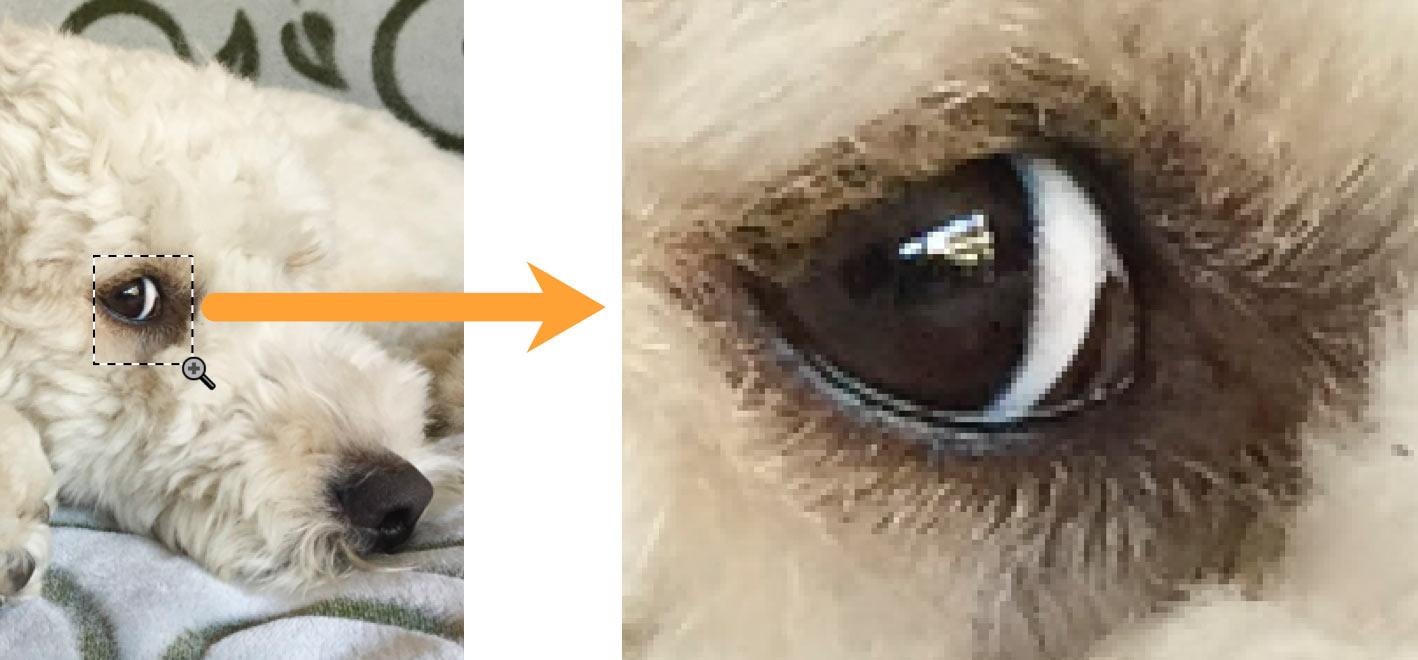
In the brush or radial gradient: hold down the spacebar and Ctl/Cmd. On Macs, order is important: hold down the spacebar, then hold down Cmd.
Lightroom Mobile: Best Photos
Previously in Lightroom Web, and now in Lightroom Mobile for iOS and Android, in an album, have Lightroom identify your “best photos”, using artificial intelligence. Try it and see how well you think it does! (In my limited testing, I can’t say I agree with a lot of its decisions on my images.)
In Lightroom Android, this is still a technology preview – make sure it’s turned on in Settings > Technology Previews.
To get started, select an album with 10+ photos, then in grid view tap on the three dot (…) icon in the top right, then Choose Best Photos. Increase or decrease the Quality threshold to narrow / expand the selection.
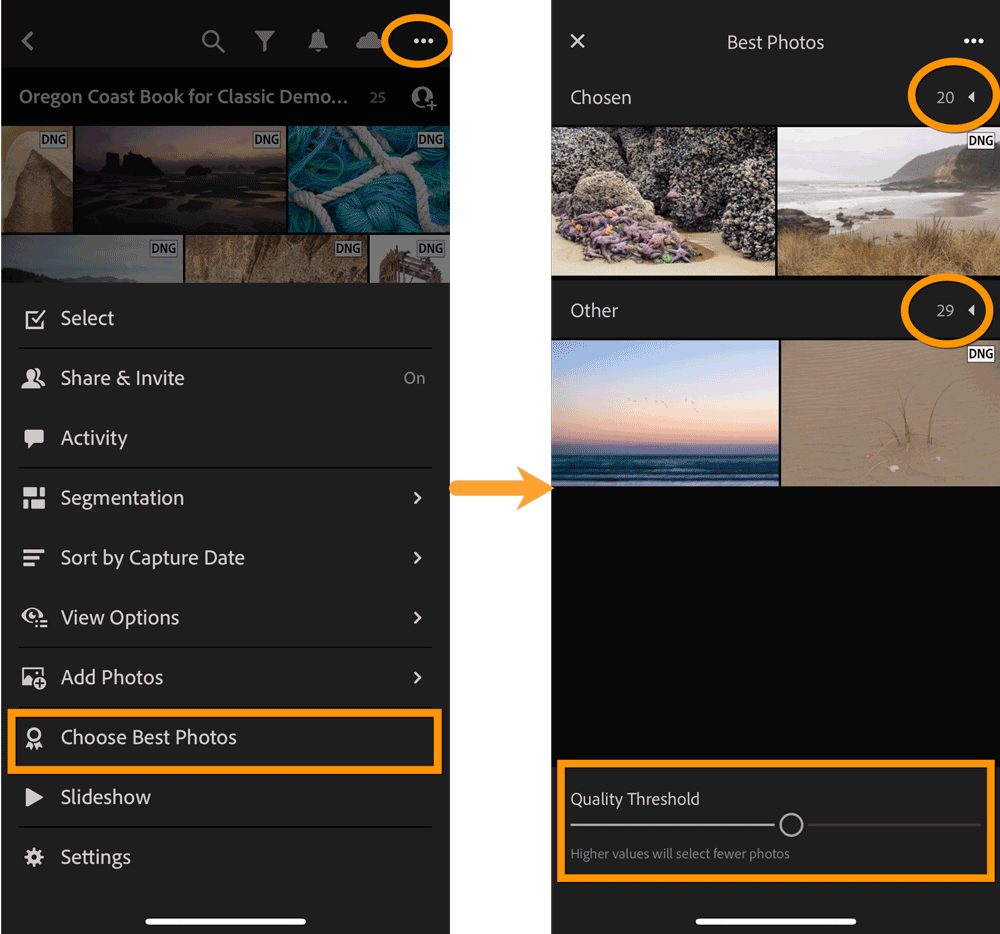
Lightroom Mobile Android: Auto Import
With this enhancement to Auto Import, choose different device folders to auto-import from and create a watched folder from which any newly added supported images or videos will be automatically imported.

